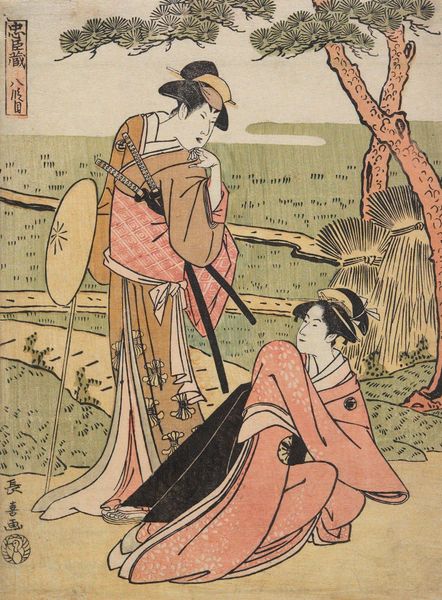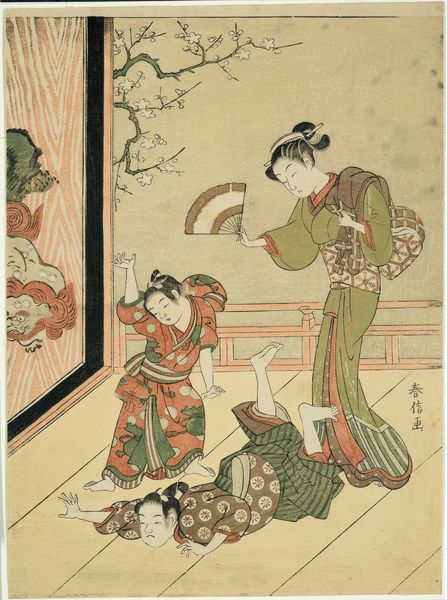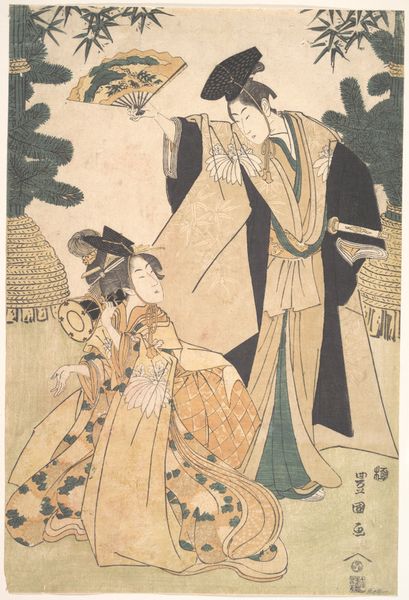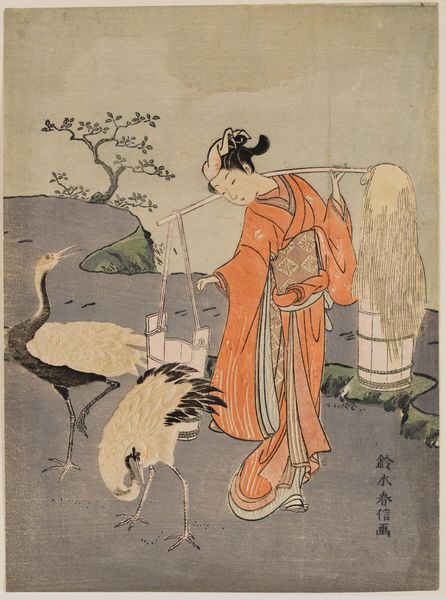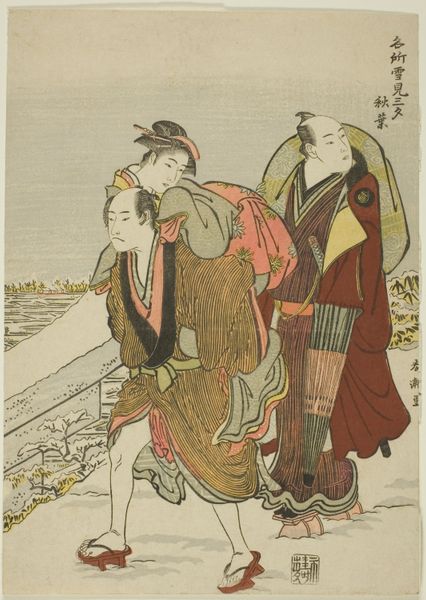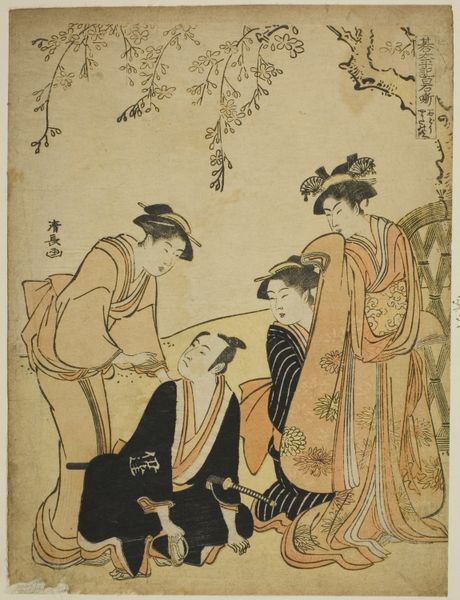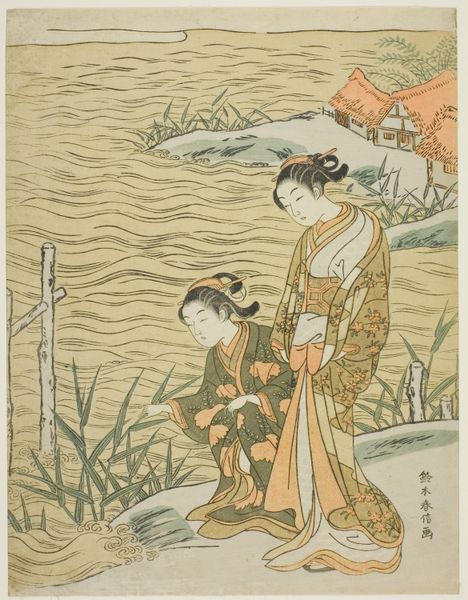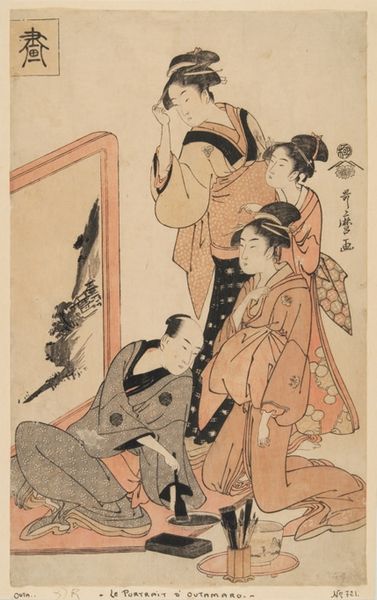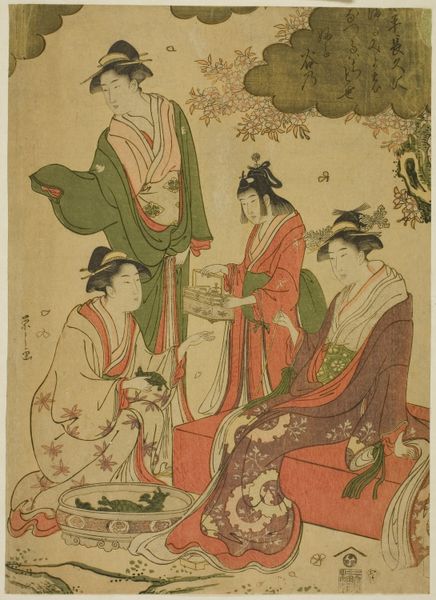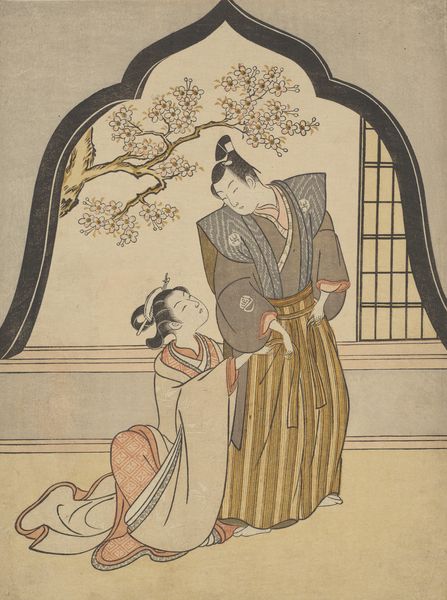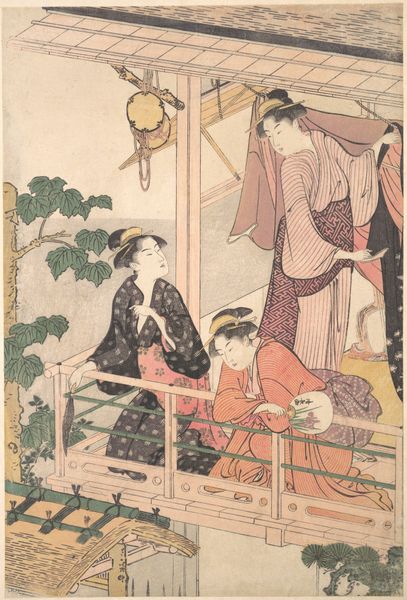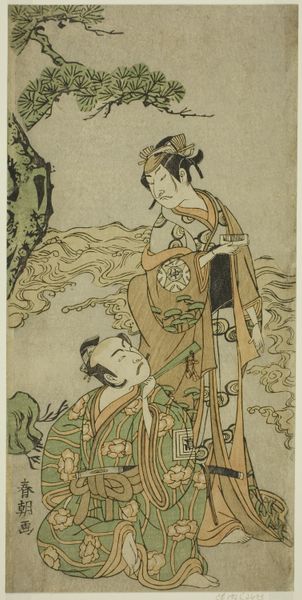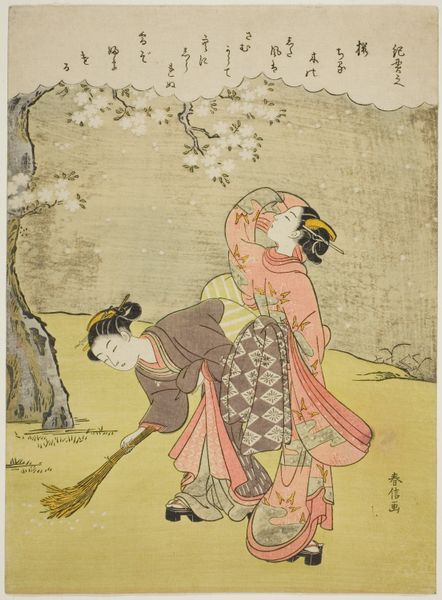
Young Samurai Viewing Cherry Blossoms as a Mitate of Prince Kaoru c. 1767
0:00
0:00
print, paper, ink, color-on-paper, woodblock-print
#
portrait
# print
#
landscape
#
ukiyo-e
#
figuration
#
paper
#
ink
#
color-on-paper
#
woodblock-print
#
genre-painting
Dimensions: 11 1/8 × 8 1/4 in. (28.2 × 20.9 cm) (image, sheet, vertical chūban)
Copyright: Public Domain
This is Suzuki Harunobu’s woodblock print, Young Samurai Viewing Cherry Blossoms as a Mitate of Prince Kaoru. Made during the Edo period, it portrays a young samurai, dressed in gender-ambiguous clothing that blurs the lines between masculine and feminine identities. The samurai is shown admiring the cherry blossoms, a traditional symbol of beauty and transience, while accompanied by an attendant. Harunobu's work often incorporates mitate, or visual puns, layering multiple levels of meaning. This print references Prince Kaoru from The Tale of Genji, known for his androgynous beauty and sensitivity to nature. The samurai's elegant attire, delicate features, and appreciation of the blossoms reflect Kaoru's character. The artist subtly critiques the rigid gender roles of feudal Japan, using beauty and nature to explore themes of identity, social status, and personal expression. The print invites us to reflect on how cultural ideals of masculinity and beauty can be both celebrated and subverted through art. It captures a moment of serene contemplation, subtly challenging the norms of its time.
Comments
minneapolisinstituteofart almost 2 years ago
⋮
This print shows a young man carrying two swords, one long and one short, indicating that, despite his youthful age, he is a samurai. He gazes up at the blossoms of a cherry tree. Yet Suzuki Harunobu, the designer of this print, has embedded within his image a riddle that serves as the key to this picture. A small symbol on the man’s right shoulder is a so-called Genji crest (Genji-mon), one of 54 geometric symbols that each refers to a chapter of The Tale of Genji. A knowledgeable viewer’s recognition of the symbol also means understanding this picture as a parody-picture (mitate-e) of chapter 48, the “Early Ferns,” in which Prince Kaoru (the illegitimate son of Genji’s friend and his wife who had been raised as Genji’s own) regrets having arranged a marriage between his one true love, Lady Nakanokimi, and his friend, Prince Niou. In this witty take on a Genji picture, Suzuki Harunobu transforms Kaoru from classical-period courtier to contemporary samurai.
Join the conversation
Join millions of artists and users on Artera today and experience the ultimate creative platform.
